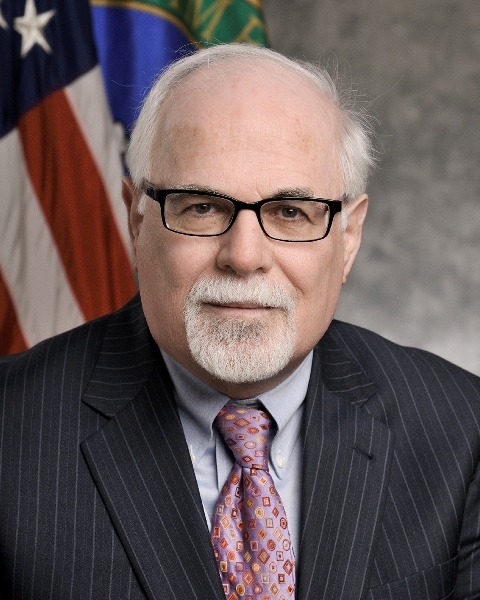- Home
- Agencies
- Department of Agriculture
- Department of Housing and Urban Development
- General Services Administration
- Department of Commerce
- Department of the Interior
- National Aeronautics and Space Administration
- Department of Defense
- Department of Justice
- National Science Foundation
- Department of Education
- Department of Labor
- Office of Personnel Management
- Department of Energy
- Department of State
- Small Business Administration
- Environmental Protection Agency
- Department of Transportation
- Social Security Administration
- Department of Health and Human Services
- Department of the Treasury
- U.S. Agency for International Development
- Department of Homeland Security
- Department of Veterans Affairs
- Goals
- Initiatives
- Programs
Primary tabs
FY 16-17: Agency Priority Goal
Environmental Management and Nuclear Waste Disposal
Priority Goal
Goal Overview
Overview of the Management part of the goal:
Fifty years of nuclear weapons production and energy research generated millions of gallons of liquid radioactive waste, millions of cubic meters of solid radioactive waste, thousands of tons of spent nuclear fuel and special nuclear material as well as the deactivation and decommissioning of thousands of excess facilities. The Environmental Management (EM) program was established in 1989 to manage the successful cleanup of this Cold War legacy.
Management and removal of radioactive transuranic waste across the complex directly supports risk reduction and the goal of reducing the EM site footprint. The EM Program coordinates with all Department sites to retrieve, repackage, characterize, ship, and dispose of transuranic waste. The only facility where transuranic waste can be disposed is the Waste Isolation Pilot Plant near Carlsbad, New Mexico. Currently, the repository is recovering from accident events and is not accepting any waste for emplacement. Department sites generating and processing transuranic waste are storing these inventories requiring disposal until waste emplacement operations are resumed which is currently anticipated by the end of calendar year 2016.
The EM Program has an estimated 88 million gallons of highly radioactive waste from the legacy of the Cold War stored in 239 tanks at the Hanford, Savannah River and Idaho sites. The treatment and disposal of liquid tank waste demonstrates a tangible reduction in some of the greatest risks in the EM Complex. Lastly, through the elimination of high-risk material, corresponding life-cycle cost reductions are achieved for an activity that is a major cost driver to the EM program. The Agency Priority Goal involves initiating treatment of tank waste at the Idaho Site at the Integrated Waste Treatment Unit as well as retrieving and processing tank waste at the Savannah River Site through the Defense Waste Processing Facility. The Defense Waste Processing Facility is targeted to produce 120 and 110 canisters of vitrified high-level waste in FY 2016 and FY 2017, respectively.
The decontamination and decommissioning of excess legacy facilities are an excellent indicator of EM’s progress towards the reduction of environmental, safety and health risks in a safe, secure, compliant, and cost-effective manner as well as reducing monitoring and maintenance life-cycle costs and liabilities. For example, at the Plutonium Finishing Plant complex, at the Hanford Site: several buildings previously used for defense production of plutonium nitrates, oxides and metal from 1950 through early 1989, are being cleaned out; special nuclear materials and fuels have been packaged and shipped to storage facilities; and the facilities are scheduled to be demolished to slab-on-grade by the end of calendar year 2016.
Overview of the Storage, Transportation, and Disposal part of the goal:
In March 2015, President Obama authorized the United States Energy Department to move forward with planning for a separate repository for high-level radioactive waste resulting from atomic energy defense activities. Additionally, in remarks before the Bipartisan Policy Center, Secretary Moniz discussed this path forward for defense waste as well as a parallel path for storage and disposal of commercial spent fuel, consistent with the Administration’s January 2013 Strategy for the Management and Disposal of Used Nuclear Fuel and High-Level Radioactive Waste, which built upon the work of the bipartisan Blue Ribbon Commission on America’s Nuclear Future completed in January 2012. Secretary Moniz announced three specific actions that the Department will undertake (1) Planning for a defense-only repository, (2) Moving forward with planning for interim storage of commercial spent fuel, and (3) Moving forward with a consent-based siting process for both types of facilities.
In support of these actions, the Office of Environmental Management and the Office of Nuclear Energy are working together to complete the safe cleanup of the environmental legacy brought about from five decades of nuclear weapons development and government-sponsored nuclear energy research and to lay the groundwork for implementing interim storage and disposal, including associated transportation.
Strategies
Strategies for the Management part of the goal:
Challenges for meeting the Agency Priority Goal include the start-up and operation of complex unique nuclear facilities, the dismantlement and demolition for the major Plutonium Finishing Plant facilities, and the completion of recovery activities at the Waste Isolation Pilot Plant.
Successful completion of these cleanup goals depends on overcoming technical, quality assurance, schedule, regulatory, and management challenges. The Department will leverage past experience, apply best practices and lessons learned; identify, develop, and deploy practical technological solutions; and look for innovative and sustainable practices that make cleanup more efficient.
Strategies for the Storage, Transportation, and Disposal part of the goal:
Strategy #1 - Complete the Deep Borehole Field Test (DBFT) Characterization Borehole to assess the suitability of a deep borehole disposal field test site.
Strategy #2 - Develop and publish the phased and adaptive consent-based siting strategy for the first Phase of the siting process.
Strategy #3 - Initiate engagement with communities and stakeholders interested in developing a consent-based siting process for integrated waste management system facilities; complete and publish a report that reflects the inputs received, documenting the priorities, comments and concerns expressed throughout the development.
Strategy #4 - Complete a review of the existing transportation cask Certificates of Compliance (COC) in order to identify items for confirmation and/or resolution prior to transportation of spent nuclear fuel.
Progress Update
Progress Update for the Management part of the goal:
Resume waste emplacement at the Waste Isolation Pilot Plant by the end of calendar year 2016
- DOE approved Documented Safety Analysis, revision 5. Implemented on May 29, 2016.
- Cold operations were completed prior to start of an independent management self-assessment of the contractor’s readiness to conduct the contractor’s operational readiness review to resume disposal operations. The management self-assessment began on August 15, 2016, and concluded on August 26, 2016. Installation of Interim Ventilation System is complete, and operations were initiated on September 9, 2016. Final air balancing was completed on September 11, 2016.
- DOE approved contractor’s Plan of Action for the Contractor Operational Readiness Review (CORR) September 15, 2016, and the CORR was scheduled to begin in October. The CORR encompasses all aspects of the restart of the Contact Handled (CH) waste emplacement operations at WIPP and provides DOE with independent assessment of Nuclear Waste Partnership’s readiness to safely commence waste emplacement operations.
Meet production milestones at the Defense Waste Processing Facility at Savannah River of 120 canisters of vitrified high-level waste in FY 2016 and 110 canisters in FY 2017
The Defense Waste Processing Facility at Savannah River Site produced a total of 125 high level waste canisters at Savannah River Site through September 2016. Meeting the FY 16 goal of 120 canisters.
Complete demolition to achieve slab on grade of the Plutonium Finishing Plant at Richland by the end of calendar year 2016
- Demolition of Plutonium Finishing Plant (PFP) is scheduled to begin in fall 2016. The PFP project has a regulatory milestone (Complete PFP Facility Transition and Selected Disposition Activities) which was extended with concurrence from the U.S. Environmental Protections Agency and the Washington State Department of Ecology to September 30, 2017. Additional time was needed to accommodate changes in how work was performed to further strengthen worker safety. This change in the date of the milestone enhances confidence that remaining work activities will be performed safely.
- The current status of the facilities for demolition is:
- The Americium Recovery Facility is 99.8% ready for demolition;
- The Plutonium Reclamation Facility is approximately 98% ready for demolition; and
- The Plutonium Fabrication Facility is approximately 64% ready for demolition
- The contractor completed its independent readiness assessment on September 30th. The PFP project has since been working to resolve the readiness assessment pre-start findings. Closure of all prestart findings is anticipated by October 27th and demolition of the Plutonium Reclamation Facility is scheduled to begin in early November.
Begin treatment of radioactive liquid waste at the Integrated Waste Treatment Unit at Idaho by the end of fiscal year 2016
The Target Milestone for Q4 FY16 (Initiate radioactive waste processing in the Integrated Waste Treatment Unit) was not met.
The IWTU is in an outage to complete modifications that are expected to facilitate radioactive operations. DOE expects to conduct another simulant run upon completion of these modifications in the second quarter of FY17 to better inform the path forward for initiation of radioactive operations for the treatment of the remaining 900,000 gallons of sodium bearing waste at the Idaho Site.
Progress Update for the Storage, Transportation, and Disposal part of the goal:
Complete the Deep Borehole Field Test (DBFT) Characterization Borehole by February 2017
A new strategy was developed that would change the Q4 FY16 Target to initiate drilling of the Characterization Borehole and also likely impact the Q2 FY17 Target to complete the Characterization Borehole, to milestones that were consistent with the new strategy.
Q4 FY16 Target: Issue a new Request for Proposal with a phased approach, where more than one award can be made with an emphasis on early community engagement. – Completed.
Develop and publish the phased and adaptive consent-based siting strategy for the first Phase of the siting process by the end of FY 2017
DOE’s Office of Nuclear Energy Issued an Invitation for Public Comment in the Federal Register requesting public input on the design of a consent-based siting process. Over 10,000 comments were received, catalogued, and summarized in a draft report titled “Designing a Consent-Based Siting Process: Summary of Public Input”. The draft report was issued publicly on September 14, 2016 for a second public comment period. With the information that has been received to date, a high-level draft of the siting strategy is being developed. This draft document will be released for public comment in December 2016. This is a key initial step in process development.
Q4 FY16 Target: Solicit comments from interested communities and stakeholders on what elements should be included as part of a phased, adaptive, and consent based approach to siting. - Completed.
Initiate engagement with communities and stakeholders interested in developing a consent-based siting process for integrated waste management system facilities; complete and publish a report that reflects the inputs received, documenting the priorities, comments and concerns expressed throughout the development process by Dec 2016.
Throughout FY16, DOE issued a Federal Register invitation for public comment, developed a website for promoting communications on consent-based siting, and hosted a series of eight public meetings around the country, beginning and ending with a “kick-off meeting” and “summary of public input meeting” in January and September, respectively in Washington, DC. DOE received over 10,000 comments from the Federal Register invitation for public comment. These comments have been organized and summarized in a draft report titled “Designing a Consent-Based Siting Process: Summary of Public Input”. This draft report was issued publicly in conjunction with the “summary of public input meeting” for a second public comment period. Comments on this draft report will be received through October 30, 2016.
Q4 FY16 Target: Publish a draft report that summarizes the comments/feedback that has been received from interested communities, stakeholders, and the general public throughout the development process for a strategy for consent based siting. Complete.
Complete a review of the existing transportation cask Certificates of Compliance (COC) by FY 2017 in order to identify items for confirmation and/or resolution prior to transportation of spent nuclear fuel.
Review of the existing transportation cask Certificates of Compliance is underway and on track to complete in FY17.
Next Steps
Next Steps for the Management part of the goal:
Resume waste emplacement at the Waste Isolation Pilot Plant by the end of calendar year 2016
Q1 FY 2017 Target:
-
Conduct CORR to ensure safe resumption of waste emplacement operations and perform corrective actions in response to that review.
-
Conduct DOE Operational Readiness Review to ensure safe resumption of waste emplacement operations and perform corrective actions in response to that review.
-
Resume waste emplacement operations when it is safe to do so.
Meet production milestones at the Defense Waste Processing Facility at Savannah River of 120 canisters of vitrified high-level waste in FY 2016 and 110 canisters in FY 2017
|
FY 2017 Target:
|
Complete demolition to achieve slab on grade of the Plutonium Finishing Plant at Richland by the end of calendar year 2016
PFP is in the final phase of deactivation and pre-demolition activities. The contractor continues to make deliberate, safe progress in completing high-risk projects and preparing the PFP facilities for open-air demolition.
- Q1 FY 2017 Target: Commence demolition of the buildings 236-Z and 242-Z.
- Q4 FY 2017 Target: Complete demolition of remaining buildings.
Begin treatment of radioactive liquid waste at the Integrated Waste Treatment Unit at Idaho by the end of fiscal year 2016
Q1 FY 2017 Target: Complete Phase 1 - Small Scale Tests and Engineering Evaluations.
Next Steps for the Storage, Transportation, and Disposal part of the goal:
Complete the Deep Borehole Field Test (DBFT) Characterization Borehole by February 2017
A revised strategy to acquire a Field Test Site has been developed and is being implemented. Lessons learned from the initial approach and senior NE and DOE management engagement will enhance probability of success.
The associated milestones have been changed by the new strategy:
- Q2 Target: Award more than one contract to teams demonstrating sufficient initial community support and suitable geology for the research project that will improve the likelihood of project success.
Develop and publish the phased and adaptive consent-based siting strategy for the first Phase of the siting process by the end of FY 2017
Finalize the report titled “Designing a Consent-Based Siting Process: Summary of Public Input” based on comments received during the second public comment period. Issue a draft high-level siting process for public comment. Continue research into past siting process experiences, making use of a siting experience database which has been developed and can inform strategy development. Initiate activities towards the following milestones:
- Q2 FY17 Target: Publish a draft strategy for the first phase of a consent based siting process that is phased and adaptive.
- Q4 FY17 Target: Publish a strategy for the first phase of a consent based siting process that is phased and adaptive.
Initiate engagement with communities and stakeholders interested in developing a consent-based siting process for integrated waste management system facilities; complete and publish a report that reflects the inputs received, documenting the priorities, comments and concerns expressed throughout the development process by Dec 2016.
- Q1 FY17 Target: Publish a report that summarizes the comments/feedback that has been received from interested communities, stakeholders, and the general public throughout the development process for a strategy for consent based siting.
Complete a review of the existing transportation cask Certificates of Compliance (COC) by FY 2017 in order to identify items for confirmation and/or resolution prior to transportation of spent nuclear fuel.
Completion is anticipated in Q4 FY17.
Expand All
Performance Indicators
Deep Borehole Field Test
Phased and Adaptive Consent-Based Siting Strategy
Engagement with Communities and Stakeholders (Consent-Based Siting)
Certificates of Compliance (COC)
Contributing Programs & Other Factors
The Office of Nuclear Energy (NE) is the principal organization within the Department of Energy responsible for achieving this Agency Priority Goal.
NE works closely with the Office of Environment Management (EM) to develop solutions for disposal of radioactive wastes in EM custody.
The Nuclear Energy Advisory Committee (NEAC – a Federal Advisory Committee) provides independent advice and recommendations.
The U.S. Nuclear Waste Technical Review Board (NWTRB – a Congressionally created board) provides independent evaluation of the technical and scientific validity of activities to implement the Nuclear Waste Policy Act of 1982.
The U.S. Environmental Protection Agency and the U.S. Nuclear Regulatory Commission develop compliance and regulatory standards, and provide regulatory oversight for various aspects of the storage, transportation, and disposal of radioactive wastes.
No Data Available













